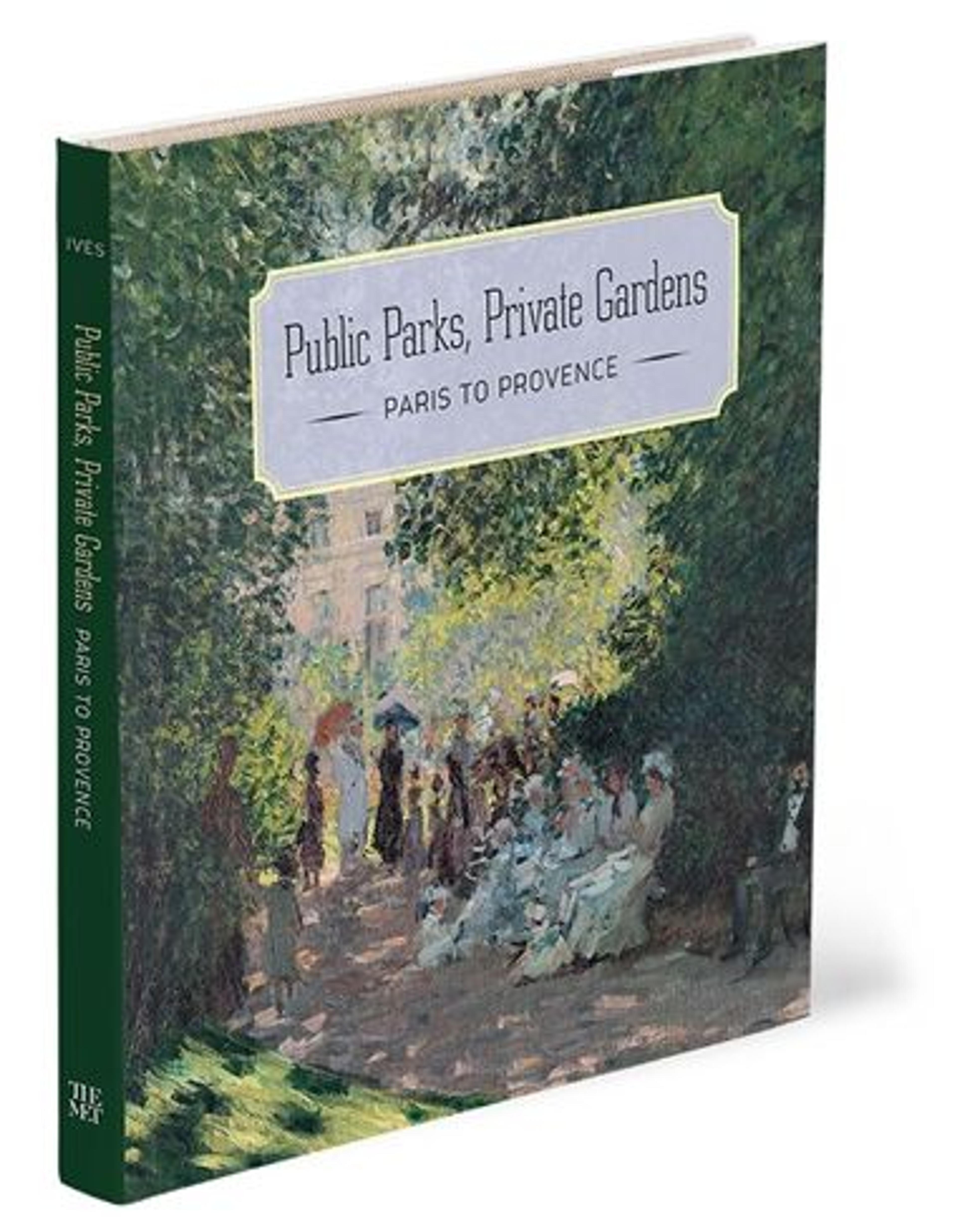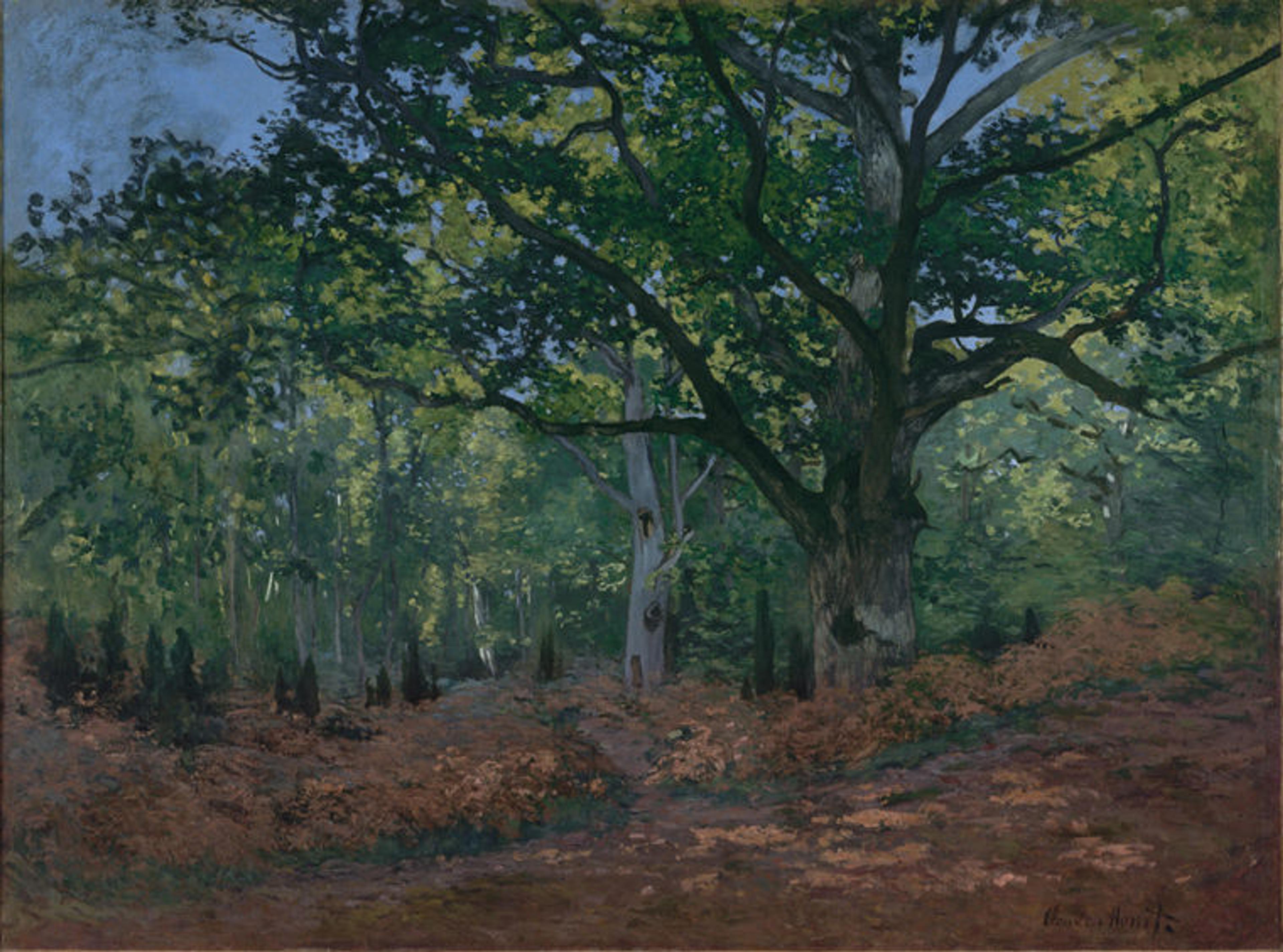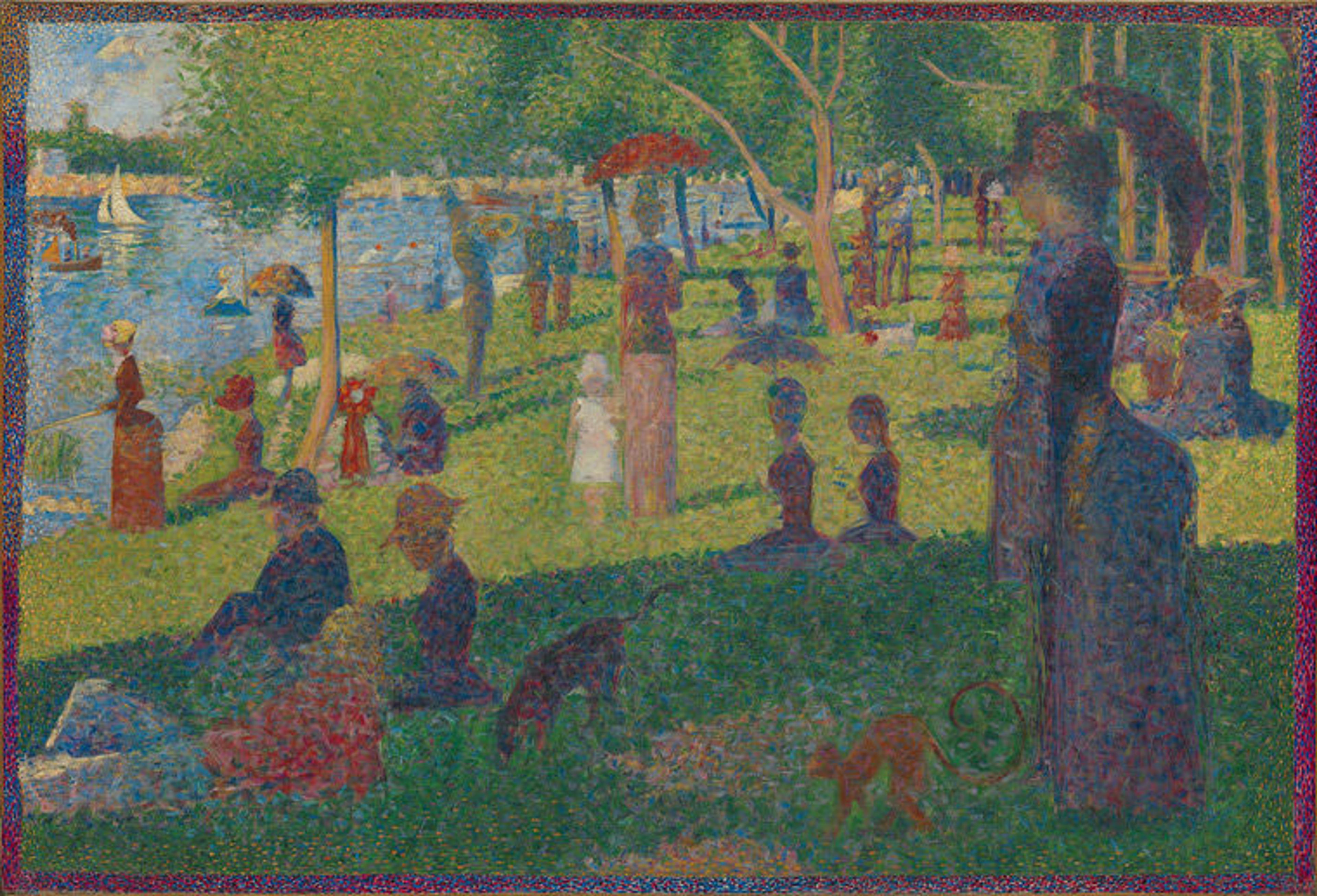«The spectacular transformation of Paris during the nineteenth century into a city of tree-lined boulevards and public parks both redesigned the capital and inspired the era's greatest artists. Featuring masterworks by Bonnard, Cassatt, Cézanne, Corot, Daumier, Van Gogh, Manet, Matisse, Monet, Seurat, and more, Public Parks, Private Gardens: Paris to Provence—accompanying an exhibition of the same name, on view through July 29—provides new insights into how parks and gardens became the distinctive scenery of contemporary life during this extraordinarily creative period in France's history. I had the opportunity to speak with Colta Ives, curator emerita and author of the book, about this transformative period, her unique background, and the many ways plants inspired these beloved painters.»

Public Parks, Private Gardens: Paris to Provence by Colta Ives, featuring 216 full-color illustrations, is available at The Met Store and MetPublications.
Rachel High: The book introduces the interest in parks and gardens in nineteenth-century France as both a scientific and aesthetic trend. What was the connection between the science of botany and the visual fascination with green spaces at this time?
Colta Ives: We could chart this trend beginning with the Age of Exploration, when Europeans sent ships all over the world in search of foreign lands and treasures. Often the treasures included exotic plants.
Voyages of discovery continued well into the nineteenth century. By that time, there were professional plant hunters who traveled to Asia, Africa, North and South America, Mexico, and Australia to search for unusual botanical specimens. Bringing back these plants became easier and more successful in the early nineteenth century thanks to glass cases made like little portable hot houses, which provided a secure humid environment and protection from salt air. This resulted in a much greater survival rate for plants shipped home from the New World.

This work by Degas features exotic blooms in vogue at the time, including marigolds and dahlias, which many artists cultivated in their own gardens. Edgar Degas (French, 1834–1917). A Woman Seated beside a Vase of Flowers (Madame Paul Valpinçon?), 1865. Oil on canvas, 29 x 36 1/2 in. (73.7 x 92.7 cm). The Metropolitan Museum of Art, New York, H. O. Havemeyer Collection, bequest of Mrs. H. O. Havemeyer, 1929 (29.100.128)
The great explorer Alexander von Humboldt traveled to North and South America in the early years of the nineteenth century and brought more than sixty thousand plant specimens back to Paris from the New World, six thousand of which had never been seen before in Europe. The science of botany had come into its own in the eighteenth century and a great interest developed in treating botany as its own science, rather than considering plants simply as medicinal aids. A number of French nurseries soon began to hybridize plants in order to create new varieties. The continual tidal wave of new plants coming into Europe was extremely exciting to scientists, and also stimulated interest among gardeners and artists. The population boom at the time encouraged this development; people began moving to more urban areas, but yearned for the pleasure of green spaces in cities and suburbs, which could be reached through the innovation of train travel.
Many French painters of the nineteenth century had homes where they could cultivate their own gardens. Monet, Caillebotte, and Renoir were attracted to exotic plants such as chrysanthemums, dahlias, and marigolds. The artists planted the vibrant flowers in their private gardens, and experimented with the charm of dazzling tropical colors in their brightened palettes.

Ephemeral documents like the ones illustrated above indicate the important role of gardening in modern Parisian life. Left: Published by L. Christophe (French, active mid-19th century). Invitation to the Gardeners' Ball, August 30, 1843. Lithograph, 3 1/4 x 4 7/16 in. (8.3 x 11.2 cm). The Metropolitan Museum of Art, New York, Museum Accession (x.820). Right: Trade card for Maison Jacquin Jeune, garden supplier, ca. 1850. Lithograph, 3 x 4 1/2 in. (7.6 x 11.5 cm). The Metropolitan Museum of Art, New York, Gift of Bella C. Landauer, 1925 (26.28)
Rachel High: In addition to some of the most beloved paintings from this period, the book and exhibition also feature garden plans, botanical drawings, business cards, and other ephemera. What do these pieces tell us about the Impressionist and Post-Impressionist masterworks?
Colta Ives: They certainly help to demonstrate how popular gardening became among people at all levels of society. The development of public parks in Paris at mid-century and the introduction of broad, tree-lined streets made greenery the backdrop for much of modern Parisian life. The renewed city gave its inhabitants great pride and attracted tourists by the thousands. The Impressionist painters were ever alert to the current trends of their day, and of course, they were very interested in the popularity of recreational meeting grounds—from the walking trails and picnic spots of the Fontainebleau Forest to the pathways and park benches of the Tuileries Gardens.

Claude Monet (French, 1840–1926). The Bodmer Oak, Fontainebleau Forest, 1865. Oil on canvas, 37 7/8 x 50 7/8 in. (96.2 x 129.2 cm). The Metropolitan Museum of Art, New York, Gift of Sam Salz and Bequest of Julia W. Emmons, by exchange, 1964 (64.210)
Rachel High: You're an art historian, but you are also trained as a landscape designer. How did your unique background influence the way you approached this material?
Colta Ives: I've always been very interested in botany and am a passionate gardener, so several years ago I decided to pursue a degree in landscape design at Columbia University. At the same time, I began thinking about how developments in horticulture, garden design, and the vast relandscaping of Paris in the nineteenth century served to shape the art of that period. When I sat down with Susan Stein, The Met's Engelhard Curator of Nineteenth-Century European Painting—a longtime friend and collaborator—to discuss this phenomenon, she became interested too. That is how the book and exhibition came about.
Rachel High: Green space can be surprisingly political—we see that today in debates over global warming and ecological responsibility—and the book discusses some of the politics of green spaces in the nineteenth century. What are some examples of these issues featured in the publication?
Colta Ives: After the French Revolution, large properties owned by the crown and aristocrats were broken up. Royal lands, hunting grounds, and palatial gardens attached to royal residences were opened to the public.
The transformation of Paris under Napoleon III could be said to have started with his uncle Napoleon I, who had grand, unrealized plans for tree-lined boulevards and green spaces. While in exile in England, Napoleon III became greatly attracted to the large parks of London. When he returned to France in the early 1850s and then became emperor, he envisioned a plan to make Paris a city of public parks. He engaged a trained engineer, Baron Haussmann, to supervise this enormous urban-renewal project while becoming closely involved with nearly every aspect of it.

The citizens of Paris largely embraced the development of public parks, which became urban gathering points for socialization and recreation. Georges Seurat (French, 1859–1891). Study for A Sunday on La Grande Jatte, 1884. Oil on wood, 6 1/8 x 9 1/2 in. (15.6 x 24.1 cm). The Metropolitan Museum of Art, New York, Bequest of Sam A. Lewisohn, 1951 (51.112.6)
The introduction of four new public parks—including the vast properties of the Bois de Boulogne and Bois de Vincennes, which had been royal hunting grounds—saw thousands of acres converted into pleasure gardens for the public. More than six hundred thousand trees were planted in Paris at this time, and more than two thousand different species of plants were introduced into public gardens. The French government addressed issues of transportation, sanitation, commercialization, and real-estate development all at the same time, while aiming to build a beautiful city that would satisfy the population and attract foreign investment and tourism.
I don't think there's any city that hasn't been positively impacted by the development of public green spaces. We continue to see such developments throughout the world, including in New York City, where new public green spaces, large and small, crop up every year. We need and value them more than ever!
Related Links
Public Parks, Private Gardens: Paris to Provence is on view at The Met Fifth Avenue through July 29, 2018.
View content related to the exhibition, including an overview of the exhibition galleries and related videos.
Purchase a copy of the publication at The Met Store.